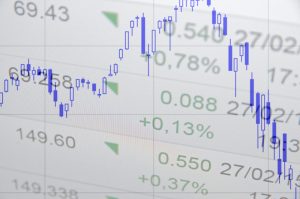
When trading the Forex market, the economic calendar plays a vital role in deciding immediate trading strategies based on world economic events. These events and news releases can be categorized as having a high impact, medium impact, low impact or no impact. Each event type has a different level of influence on the markets, and traders can filter which events they deem most relevant. Here is a look at the strategy of focusing on high-impact events.
Why high-impact events?
The key reason for focusing on high-impact events is that they affect a large volume on the market and thus have a larger influence on the levels of market volatility. As a result, high-impact events create a greater movement in the market than low-impact events do. The strategy of trading the news follows the idea of high-volume and high-volatility trading, which provides more opportunities for increased profits when done correctly. By analyzing economic events and playing the market correctly during these unstable conditions, traders can make increased gains. If you were to focus on low-impact events, you would not be able to take advantage of a high-volume, high-volatility situation.
The effect of high-impact events on price action
When comparing the price action during a high-impact event versus the price action surrounding a low-impact event, significant differences can be seen. You can monitor these comparisons by going into an online economic calendar on any forex trading platform or broker website. Choose two events from the same day, one with a high impact and one with a low impact. Be sure that your economic calendar time is aligned with that of the platform.
An example of this procedure could be a high-impact event like non-farm payroll and a low-impact event like the monetary base year-on-year release for the Japanese Yen. The price action for the non-farm payroll will be tracked using the EUR/USD currency pair, and the monetary base y/y will be tracked with the EUR/JPY currency pair. If the monetary base y/y was released at 2:50am and non-farm payrolls were released at 15:30pm the next day, you would find these times on the individual charts and mark the releases in that time period. You would then be able to spot the patterns in the charts as the price action moves before and after the release of information.
In this example, the non-farm payrolls chart will have a higher range, while the monetary base y/y will have a lower range. This translates to a high pip range, say 100 pips for the high-impact release chart compared to 30 for the low-impact release chart.
This range difference is what makes a high-impact event so useful. A wider range produces more opportunities for high profits and gains. If you can monitor these news releases, your trades could be highly successful if done strategically according to the potential influence of the release on the market. By tracking the relevant releases for each day that apply to your currency pairs, you can recognize whether the release is likely to have a positive or negative effect. You can then place your trades accordingly.
The point of focusing on high-impact events is not predicting future market fluctuations. It is merely to understand which events will provide you with better opportunities for success. Once you are comfortable with recognizing these high-impact releases, you can plan your trades accordingly and cultivate more potential profits. It is important to remember that as with all strategies, this should be used together with other valuable trading techniques to improve your trades and propel success.